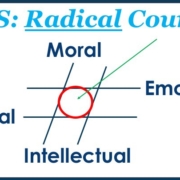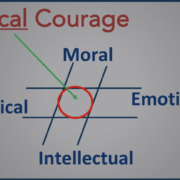How sustainable is your Business or Nonprofit? This chart will help
How sustainable is your business or nonprofit? This chart will help

Use this Simple Chart to find out and learn what to do about it.
Zombie or Volcano?
By the end of this article, you’ll be better positioned to answer three crucial strategic questions for your business or nonprofit:
- Is my organization sustainable?
- How can I realistically assess the situation and avoid confirmation bias?
- How can I frame my strategic options so that I make the best decisions?
Just about every small business owner and nonprofit leader I know is incredibly busy. You are so passionate that your work stops feeling like work and becomes a part of you. You love what you do and do what you love. But is there a downside?
As a matter of fact, there is. Leaders can get so caught up in their product, service, or cause that they become blind to the first strategic question: how sustainable is my business or nonprofit? Ignoring or avoiding this question can lead an organization to become a zombie (sleepwalking to failure) or a volcano (suffering catastrophic growth on the way to failure).
A zombie is an organization that is no longer increasing its revenue or expanding its impact. It is merely paying the bills and keeping the lights on until the money runs out. The problem, of course, is the drain of talent and resources entailed by clinging to the status quo. Zombies do not fail fast—they linger.
A volcano, on the other hand, is an organization that grows faster than it can manage. Often, leaders fail to recognize the problem until too late. They get distracted by the euphoria of success and drawn into the chaos that they fail to develop their leaders and systems to handle it. At some point, growth becomes unmanageable. A major crisis or scandal often breaks the organization.
There are simple and common reasons for these problems.
Confirmation bias is one of them. This refers to the tendency to place excessive weight on data that conforms to our existing beliefs and to discount information that does not. Confirmation bias can help explain why nonprofits cling to causes that too few donors will support, and why businesses fixate on products and services too few customers want to buy.
It gets worse. Those with confirmation bias tend to dig-in their heels when confronted with disconfirming facts and information. Highly-selective data drives their decision-making. Like the sooth-sayers of old, people invested in the status quo may be at higher risk of searching the entrails for hidden messages that everything is fine.
The result: 50 percent of businesses are no longer around after five years and only 28 percent of nonprofits report any financial activity after ten years.
A disciplined look at the big picture may help leaders make better decisions.
This simple quad chart could be useful. The north-south axis depicts profitability: the + direction means revenues exceed expenses. The east-west axis is for impact. The + direction denotes the tangible impact on your cause or mission.

Four strategic directions emerge from this quad chart. The upper right quadrant is the ☺ place. Solid revenues and clear impact give your organization a strong foundation for growth. The danger in this situation is growth beyond your ability to manage it – catastrophic growth.
To avoid that problem, you will need the right team in place and a sound strategy.
Within the upper left space is a situation in which revenues are ahead of expenses, but the actual impact of the product or service is unclear. This is a dangerous position because you may be tempted to hire more staff and commit more resources. If, after some time, you cannot clearly articulate your impact, then revenues are very likely to dwindle. This means layoffs and possible bankruptcy. One of my clients found himself in exactly this situation; saving and repositioning the business was painful but ultimately successful.
A sound strategy in this situation is to maintain your current scope and scale but fix how you measure and explain your impact of the mission or cause.
If that becomes impossible, then merge with another organization. The ideal time to do so is when you can bring substantial resources to bear. This gives you leverage and influence. Too many organizations make this decision too late and have little bargaining power.
The lower right is where many organizations turn into zombies. Your team is making an impact, you believe, but your revenues are insufficient. This may be the result of one or more problems. The way you are measuring and explaining impact, for instance, might not be convincing. Your strategy could be causing you to miss important shifts in the marketplace, or your business plan could be wasting time and resources on activities that are no longer valued.
Again, you have two options. First, try to fix what is impeding your progress. Get a comprehensive and thorough strategy review and organizational assessment to determine if the required changes are feasible. If yes, give yourself a decision-point for knowing when to move to the second strategy option: merge.
If you decide that your organization is unlikely to recover, your best option is to merge.
The lower left quadrant is the ☹ place – insufficient resources and impact. Your best option here is to harvest: shut down, learn from the experience, and begin again with something different. Failing fast successfully requires you to measure your revenues and impact from the very beginning and to set a decision-date to establish whether your business is viable.
This chart should be a part of every business or nonprofit strategy. It is a constant reminder to determine the compelling impact you are trying to make, measure it, and explain it clearly to your customers or donors. The aim is to create a virtuous cycle: compelling impact results in positive revenues and greater revenues lead to higher impact. When one or both of these elements is flatlining or declining, you need to diagnose the problem quickly and decide whether to improve your organization or close it down.









